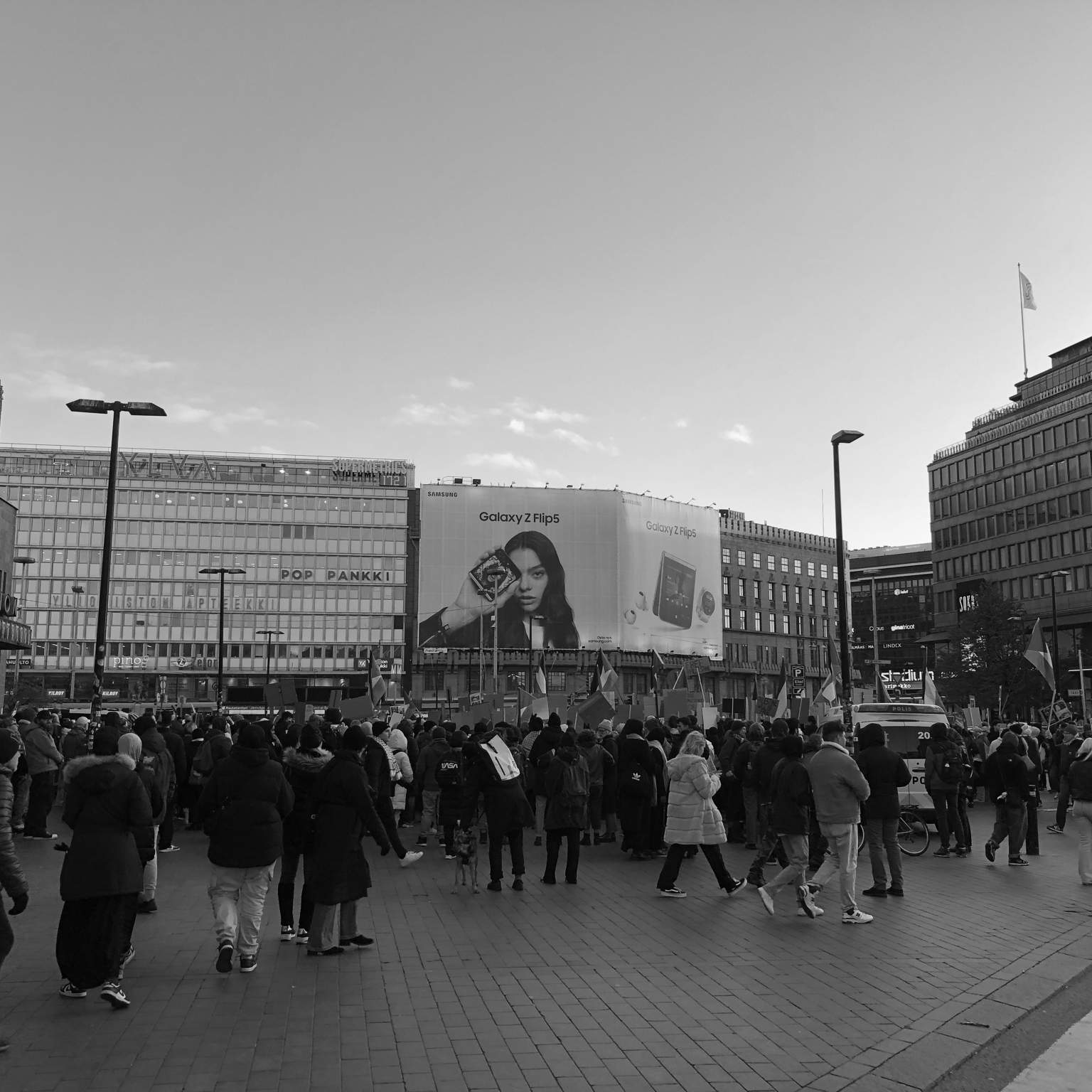Last year in this space, Nolen Gertz wrote,
[i] Amen. This is, unfortunately, a position that most designers would probably still find baffling, so let’s sing it from the mountaintop.[ii]
Yet, I somehow find it troubling. Also last year, after a lively conversation about the politics of design in which most members of the audience and the panel (on which both I and Nolen sat) agreed that designers need to be more political in their work, I blurted out, a bit exasperated, “why can’t designers just design? Why can’t they just take pleasure in making things, and if they want to be political they can join a party or chain themselves to a pipeline or something.”
I was trying to be provocative. I don’t really believe that anyone, including designers, should leave their beliefs at home. And I certainly wasn’t trying to stick up for design for design’s sake, as if artifacts do not have politics. I am, rather, a firm believer in the general premise that, as Gertz also wrote, “all design is political,” insofar as it is, for better and worse, a product of and shaper of social relations. I think what I really meant is that we should perhaps recognize a distinction between little-p politics and Politics proper, which recent theory has done a good job of complicating but which still might have some utility. Second, I wanted to highlight the absurd amount of responsibility we’ve placed on designers for both creating and solving problems that may be beyond its scope. And third, I wanted to point to the political economy of design, to the fact that design is, as a profession, largely beholden to forces of capital, and that as a result the meaningful opportunities for political action may be limited.
One important fact to bear in mind that the rise of a political conscience in design has been coincidental with, and intimately related to, the rise of neoliberalism and the retrenchment of the state over the last fifty years. So many of the projects that designers take on as service, social, critical, and justice design are addressing needs that, particularly in the U.S., where I’m from, but also other places, were previously addressed by the state or have been caused by its retreat. This, of course, is not designers’ fault. But they often are unaware of it, and that can narrow their imagination to the kinds of solutions designers are good at providing—tools, products, apps, etc. “The state,” a designer friend of mine told me recently, “is so shriveled in the minds of so many designers they don’t even think about it as a participant.” Many designers aren’t trained to see the struggles that have been going on from the grass roots to the halls of parliament to address these issues for years.
One of the reasons designers hardly think of state or Big-P Political solutions, is that since the 1960s there has been a somewhat anarchic preference for small-p politics. The legacy of late-Mumford and Papanek, traumatized by the holocaust and the a-bomb, was a democratic and anti-organizational ethos that delighted in the idea that politics could be waged at the level of the object, that design could put tools, and therefore power, into the hands of the many. This has yielded all manner of awesome design movements (not all of which is necessarily anti-statist) but much of the work that wages its political fights in the method and form of design does so ultimately on the free market of goods and services. There are clear limits to how much can be gained on that terrain, and the reality is that most design is still directed by massive corporations. Any agenda for design to be more political, from simple (but effective) acts of awareness-raising such as Eva PenzyMoog’s efforts on behalf of victims of domestic violence, to Tony Fry’s insistence that design itself, as a field, “move out of its economic function and into a political frame” must recognize the simple historical fact that design—the whole apparatus of schools and firms and critics is and has always been largely powered by consumer capitalism and thus answers ultimately to the profit motive.[iii] This does not mean it can’t be a site of struggle, but it’s not exactly a fair fight.
And this brings me to the question, what power does the individual designer embedded within capitalist enterprise hold?
Design agitator Mike Monteiro worked in social media tech for years before he realized the harm his products were doing, and now tells young designers to just say no. “No one can make you do anything you don't want to do,” he says, encouraging designers to stop making dumb and pointless things for greedy corporations, and start using design to really improve the world.[iv] But what would really happen if a designer said no, refused to work on a project or implement a feature because they perceived it to be wrong? My gut says they would be fired and immediately replaced with someone else. This does happen, and more significantly the threat of it happening has a chilling effect on rank and file designers. Designers also have a moral obligation to their families, and a financial one to their landlords. Design may feel like a calling but it is, in the end, also a job, and in this sense designers are like any other employee whose political and moral revolt we do not regularly demand.
A masters project at last year’s DDW by Alfonso de Matos called “Who Can Afford to be Critical?” (which has since evolved into a book) pointed us to the simple fact that saying no, including by opting out through critical design practice that is not, almost by definition, profitable, depends on a certain amount of cushion, be it an academic contract, a government grant, or a nest egg built from highly lucrative “normal” design.[v] (It’s telling that Monteiro’s Oppenheimer moment comes from the comfort of an established career). We hear a similar complaint about speculative design, that it’s mere “art” to be shown in exclusive white cubes for elites to chuckle over. Could it be that Monteiro is actually just part of a highly visible, TEDTalking, SXSW panel-sitting, book-writing strata of “critical” designers who make a living preaching that designers are responsible—and, by extension, at fault (Monteiro’s book is called Ruined by Design)—for the state of the world?
Surely that’s far too cynical about the role of critical design intellectuals and practitioners. All manner of critical, adversarial, justice-oriented, and speculative design are essential to articulating the connections between politics and design at the level of materials, code, and ergonomics. (The best speculative design, in fact, actually points to the insufficiency of design precisely by dramatizing the absurdity of solving political problems through goods and services.) But it’s also surely true that, as de Matos writes, “saying that ‘design is powerful’ does not necessarily equate to claiming that designers themselves, as individuals, as professionals, are powerful as well.”[vi] Perhaps if enough designers become political and stick to their guns it will be harder and more expensive to replace them, but I’m skeptical. Another way, of course, would be to organize. Yes, creative sector unionism has a spotty history (though many people are surprised it has one at all) and union contracts typically cede all decisions about the products and projects themselves to management, but all of that may be changing. Even more exciting is the informal organizing, most visibly in the 2018 walkouts by Google employees, focusing explicitly on design of the technology itself. In other words, if just saying no as a lone designer may be an inspiring fantasy, collective action may actually work. And that’s just good, old fashioned politics.
[i] Design United. “The Politics of Design and the Design of Politics.” Accessed October 20, 2023. https://www.4tu.nl/du/columns/The%20Politics%20of%20Design%20and%20the%20Design%20of%20Politics/.
[ii] Thanks to Shelly Ronen for her invaluable insights on this topic.
[iii] Fry, Tony. Design As Politics. 1st ed. Berg Publishing Plc, 2011, 5.
[iv] How Designers Destroyed the World - Mike Monteiro, at USI, 2015.
[v] Matos, Afonso, ed. Who Can Afford to Be Critical? An Inquiry into What We Can’t Do Alone, as Designers, and into What We Might Be Able to Do Together, as People. First edition. Set Margins’. Eindhoven: Set Margins’, 2022.
[vi] https://whocanafford.cargo.site/





